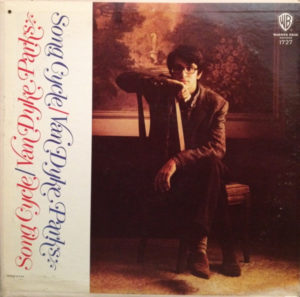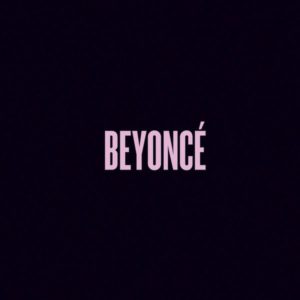Slavoj Žižek is one of the most famous philosophers in the world today. Because of that status, he is constantly criticized in the media. It seemed mildly amusing to summarize the most common bases for these critiques. There are a few common threads, mostly revolving around two principles adopted from Hegel and Rousseau.
The Emperor Has No Clothes
The fist type of critique is to more or less intentionally misrepresent Žižek’s arguments and theories by refusing the acknowledge the underlying basis of theoretical disagreement. This is the approach most commonly taken by academics who wish to assert that Žižek is wrong but they are right. A good example is this op-ed by two virtually unknown professors: “Žižek’s Hypocrisy.” The usual approach for these critiques is to claim that Žižek is a hypocrite by not being a “pure” expression of something he says, even though one of Žižek’s key positions is that there is no such purity possible. He has written many times about the dangers of “beautiful soul” syndrome (in the Hegelian sense). Yet these critics demand that Žižek adopt the position of the “beautiful soul” standing apart from the evil of the world. Here is a quote from an interview he gave discussing this very point:
“I think it’s too easy to play this moralistic game — state power is corrupted, so let’s withdraw into this role of ethical critic of power. Here, I’m an old Hegelian. I hate the position of ‘beautiful soul’, which is: ‘I remain outside, in a safe place; I don’t want to dirty my hands.’ In this ironic sense, I am a Leninist. Lenin wasn’t afraid to dirty his hands. That’s what I miss in today’s left. When you get power, if you can, grab it, even if it is a desperate situation. Do whatever is possible.”
In other words, the critics impose their theory on Žižek but claim that Žižek is violating his own theory. No, all they have done is reject his theory and inserted their own. Anyone can do that.
All this is largely the basis for Noam Chomsky‘s attack on Žižek as a charlatan: Chomsky comes from the Analytic school of philosophy, whereas Žižek is from the Continental school. Chomsky acts as if there is no such thing as the Continental tradition, and proceeds to complain about why Žižek does not conform to what are inherently opposing Analytic positions. Chomsky disavows his ideological position.
Assertions of Naivete, Crypto-fascism
Another common attack is the critique that Žižek is impractically, or even dangerously naive. Usually these attacks are prefaced with an assurance that the critic actually likes/respects him, but that he’s gone astray on some certain argument or line of argument. Unlike the “emperor has no clothes” critics, these attacks generally acknowledge that he takes a different position than the critic and assert that where he diverges from the given critic’s own position is where Žižek is being naive. An example of this tactic is “An Ode to the Death of Europe and a Concerned Love Letter to Žižek.” Many of these critiques come from anarchist-leaning people, who (and here’s the ironic part) think that Žižek’s Leninist/Rousseauian position is naive. But from a historical perspective remember that these are anarchists who think that the evils of the world can wither away without being crushed by a strong state, and they have the audacity to call others naive! This, in many ways, is a deeper disagreement than the “emperor had no clothes” line of attack, though still the same basic disagreement. Žižek rejects the “beautiful soul” attitude while these critics strictly insist upon it, and, from a Leninist/Rousseauian position disagrees with some kind of jump from late capitalism straight to a purely horizontal society. But it is also worth noting that, following sociologist Pierre Bourdieu‘s theory of social distinction, the most vociferous of these critiques tend to be the ones from people and publishers that are closest to Žižek on the political spectrum — he has stated that a purely horizontal society would be nice but could never emerge directly from late capitalism. But these sorts of critiques are the most lamentable, because the critics tend to be people who actually agree with him on most points, but instead of finding common ground they squabble over who should get credit for the best theoretical position — the essence of Left factionalism.
One of the funnier recurring critiques of Žižek along these lines is that he is expressing some kind of right-wing, reactionary, fascist position (despite his reputation and attempts to pursue the opposite position). He draws the most ire in this respect for his outspoken position against political correctness. Adam Kotsko has explained the source of this disagreement well, highlighting how “Žižek’s political interventions always try to highlight a fundamental conflict or deadlock. He does so not by laying out a step by step argument with a clear thesis statement, but by overidentifying with the (inadequate) terms of public debate in order to press beyond them.”
It is certainly worth noting that Žižek usually takes for granted that he is arguing for an Enlightenment, rational and communist political position to prevail. He doesn’t spend a lot of time bolstering those points. That is to say in his mass-media engagements he doesn’t spend a lot of time arguing for why a rational egalitarian social system is better than a power-based (irrational) system of inequality. To be a bit more specific, he adopts a thoroughly Rousseauian conception of a democratic society, in which any vote by a majority to disadvantage a minority is invalid — many critics who reject this Rousseauian position criticize Žižek when he more or less applies it to current events. Ironically, it is precisely this adoption of Rousseauian conception of democracy that gets him labeled a crypto-fascist (by people who seem to want a society like that depicted in Lars Von Trier‘s Dogville).
He Has No Program
Some say Žižek does not clearly set forth a coherent program for what the world should look like. The rebuttal to that charge is summed up nicely by Noam Chomsky, who has said, “One commonly hears that carping critics complain about what is wrong, but do not present solutions. There is an accurate translation for that charge: ‘They present solutions, but I don’t like them.'” But Žižek goes a step further, actually. He disavows the ideal of the perfect program that overcomes the problems of the present. Discussing Hegel, in a general way, he has written that
“The critical ‘system’ is the systematic a priori structure of all possible/thinkable ‘errors’ in their immanent necessity: what we get at the end is not the Truth that overcomes/sublates the preceding illusions — the only truth is the inconsistent edifice of the logical interconnection of all possible illusions . . . .”
So again, the claim that “he has no program” is a variant on the “emperor has no clothes” line of attack, yet again rejecting (or ignoring) his theories to impose a different theory.
But Žižek openly acknowledges that he argues from certain positions: “there is a need for radical economic change . . . . When I was young, such an organized attempt at regulation was called communism. Maybe we should reinvent it. Maybe this is, in the long term, the only solution.” He also says that “a thorough radical transformation of global capitalism that should begin in the developed West itself.” This is an old left position, not unlike the argument of Judith Katz in the book White Awareness, that racism is a white person’s problem — in contrast to the many contemporary “multicultural” approaches with toothless anti-racism committees staffed entirely by non-white minorities that plead for recognition by the powerful (white) beneficiaries of racism. He instead wants the people promoting and benefiting from oppression to undergo a radical self-transformation that causes them to adopt universalism and egalitarianism. So while it is true that he has no fixed notion of what an ideal society should look like, he very much has some clear guidelines on which direction society should head and what are key conditions that should be met. Really, the idea that a fixed notion of a perfect society can be articulated by one person on behalf of humanity is itself ideological, and so Žižek typically rejects the framing of inquiries that way.
His Writing Is Incoherent
Another key Žižek tactic is to provocatively disregard social distinctions. This causes people to lambast him as if he does not understand social distinctions. While his writing is idiosyncratic, his refusal to honor social distinctions is really part of his attempts at overcoming them. Critics arguing along these lines are usually defenders of the status quo, or at least defenders of privileges associated with social distinctions.
Lies, Damn Lies
Another common approach is to simply misrepresent Žižek. This is usually about paraphrasing rather than quoting him. An example of this is Sam Kriss, who misquoted him to turn a critique of fundamentalists into a (supposed) attack on muslims. These are, of course, the worst sort of critiques because of their basic dishonesty. There isn’t much more to be said here.
He Repeats Himself
These are the same jokes! He is self-plagiarizing himself! These are the sorts accusations hurled at Žižek constantly. One of the most high-profile examples was his article “ISIS Is a Disgrace to True Fundamentalism” in The New York Times. He publicly refused to apologize, and thought the incident absurd. David Gunkel responded to this common accusation by pointing out that Žižek makes mashups and remixes, and self-plagiarism is “the standard accusation leveled against all remixers no matter the medium of their efforts.” In other words, these opponents presuppose an ideological position of intellectual property ownership (or some such thing) that is incompatible with the position Žižek advances. It is possible to simply reject the concept of “self-plagiarism.” But beyond that, or as an alternative perspective, these criticisms also reek of a defense of the status quo of academic hierarchies of prestige, in that he is an independent academic who (seemingly) relies on publication royalties for income, unlike tenured professors who don’t. So he does perhaps publish what amount to working drafts.
Disingenuous Grandstanding
Now, here is the best and most legitimate criticism: “could it be that Žižek is really not so different to [Donald] Trump? Both thrive on their quotability, knowing full well how easily so much of what they say can provoke outrage when read out of context; and both of them are, in their own very different ways, what the press loves to call ‘big personalities’.” Is he just a “cheap contrarian”? The essence of a Žižek argument is to take a “common sense” position that is widely accepted uncritically, then pursue the opposite position to point out how the “common sense” one is driven by ideology to disregard the real disagreements that produce a deadlock or Gordian knot, then he advances a conclusory statement of his rather reasonable position — which usually is quite modest. The reason that criticisms of him like this have merit, though, is that he is talking about waging a war against the ideological foundations of authority as he self-promotes and builds a “personal brand” (is there any other better way to describe what he does?) with shock tactics that seem to establish himself in a position of authority, of sorts. That is, he takes on the role of a celebrity public intellectual. While it is worth remembering here his rejection of the “beautiful soul” position, his tactics should nonetheless be interrogated and contested on this point. Perhaps he has settled into certain methods too comfortably? And yet, perhaps the best conclusion to draw from investigating Žižek’s work is that, yes, he is a stupid contrarian and he provides no insight into fundamental truths or guarantees of meaning. That would almost make him a Lacanian, arguing that we have to be responsible for the stupid, illusory meaning that we create to cover up the meaningless of existence…







